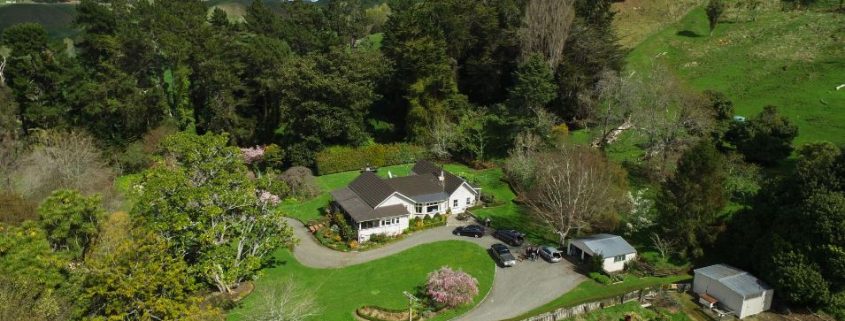Land Sales and The Bright-line Test
The Bright-line Test for land sales applies from 1 October 2015 and requires taxpayers to pay income tax on gains derived from the sale of residential land that has been owned for less than two years. Exemptions exist for the gains made on the sale of the main family home.
The Bright-line Test does not apply to ‘farmland’, which is described in section YA 1 of the Income Tax Act 2007 as “land that is worked in a farming or agricultural business of the land owner, or worked as a farming or agricultural business because of its area or nature.”
The definition identifies two categories of farmland. The first is where the land is being farmed. The second is where small parcels of land that are unable to be farmed individually can be farmed collectively.
Based on this, a farmer can buy and sell farmland within a two-year period without fear of the Bright-line Test. However, if the land being sold does not meet the definition of farmland, the gains on the sale of land may be taxable.
Intention Rule
Although farmers may escape the Bright-line Test due to its focus on residential property, profits from the sale of farmland or farm houses may be taxable under section CB 3 of the Income Tax Act 2007 that deals with a ‘Profit-making undertaking or scheme.’
Here, any “amount that a person derives from carrying on or carrying out an undertaking or scheme entered into or devised for the purpose of making a profit is income of the person.”
This section is not restricted by a two-year time frame, and if the taxpayer had the intention to sell that property with the intention of making a profit, the sale would be taxable.
These sales are considered by the IRD with the benefit of hindsight. Any correspondence or notes made by the taxpayer or their advisers may indicate intent.
Farming Land Sales Subject to the Bright-line Test
The land sales that are most at risk of being caught by the Bright-line Test are sales of lifestyle blocks, farm cottages and bare land that is not capable of being farmed.
Residential land is defined in section CB 6A of the Income Tax Act 2007 and includes:
• Land with a dwelling on it
• Land for which the owner has an arrangement relating to the erection of a dwelling
• Bare land that may be used for erecting a dwelling under rules in an operative district plan
A dwelling is defined as being any place used predominately as a place of residence or abode.
Farmers may be caught by the Bright-line Test when they sell land with a dwelling on it, or bare land (that is not farmland) that may be used for erecting a dwelling.
As the average size of farms increases, farmers are buying small neighbouring farms to increase their land holding. In 1998, the average size dairy farm was 63 effective hectares. In 2014, it was 146 (2015 LIC New Zealand Dairy Statistics report). As the farms are combined, any surplus houses are then sold off with a couple of hectares as lifestyle blocks, with the sale proceeds used to pay off debt.
The sale of surplus cottages or farm houses may be caught by the Bright-line Test or Intention Rule, as it relates to a residential home that is not the main family home. For these dwellings to meet the main family home exemption, the farmer would need to have spent time living in the house before its sale.
We recently had a scenario where a client purchased a new farm with a house that was not required. The client’s plan was to immediately sell the house with a couple of hectares. The client always had an intention to sell the land for a profit, so the profits on the sale were taxable income.
Treatment of Losses
Losses arising from transactions subject to the Bright-line Test are ring-fenced and can only be offset against taxable income from other land sales that are taxable under any of the land sale provisions. A taxpayer cannot recognise a loss under the Bright-line Test that has arisen from a transfer of property to an associated person.
What is a Farming or Agricultural Business?
Inland Revenue accepts that any of the following activities are carried on for farming or agricultural purposes:
• animal husbandry with sheep, cattle, deer, horses and pigs
• goats
• apiarists
• dairy farmers
• grain and seed growers
• market gardeners
• orchardists
• poultry farmers
• sharemilkers
• tobacco growers
• tomato growers
• wine growers
The Commissioner does not accept any of the following as being an agricultural or farming business:
• leasing or bailing livestock by the bailor
• aerial topdressing
• growing trees for timber production
• the provision of services by agricultural contractors to the farming sector
To determine whether the land is capable of being run as a farming or agricultural business, an analysis of the capability of the land would be required at the time of disposal. A case could potentially be made for moving to a higher intensity farming system that requires less land. Such a shift would need to be realistic, and not require significant investment or modification.
A small block of land may not be able to run a sheep farming business, but may be a suitable size to conduct a market gardening operation.
The sale of a lifestyle block would struggle to meet the definition of farmland, so may meet the definition of residential land. Lifestyle blocks generally have dwellings on them, and the right to erect a dwelling under district plans. The taxpayer would have to show that the lifestyle block was being run as a farming business and would be required to meet the business test case set down in Grieve v CIR (1989).
Timing
The Bright-line Test applies to residential property that is disposed of within two years of acquisition.
The date of acquisition is defined in section CB6A(1) as being:
(a) the date on which the instrument to transfer the land to the person was registered under the Land Transfer Act 1952; or similar foreign law if the land is outside New Zealand, or
(b) the date of acquisition of the land, if an instrument to transfer the land to the person is not registered on or before the Bright-line date.
The date of acquisition in section CB6A differs from the date of acquisition that is in section CB15B. CB15B applies to all land transactions apart from the Bright line Test, and defines land acquisition as being “the date that begins a period in which the person has an estate or interest in, or an option to acquire, the land, alone or jointly or in common with another person.”
The difference between these two sections is that section CB6A provides a later date of acquisition than CB15B. Under section CB6A, acquisition is the latest date when the taxpayer obtained an estate or interest in the land. This would typically be the date the land title was registered.
Under section CB15B, acquisition date is the date when a person has an estate or interest in, or an option to acquire. This would typically be the date that an unconditional contract was entered into. The date of disposal will generally be the date that the vendor enters into an agreement with the purchaser for the sale of the property.
As land transactions are a complex area of tax law, we recommend contacting us before entering into agreements.



